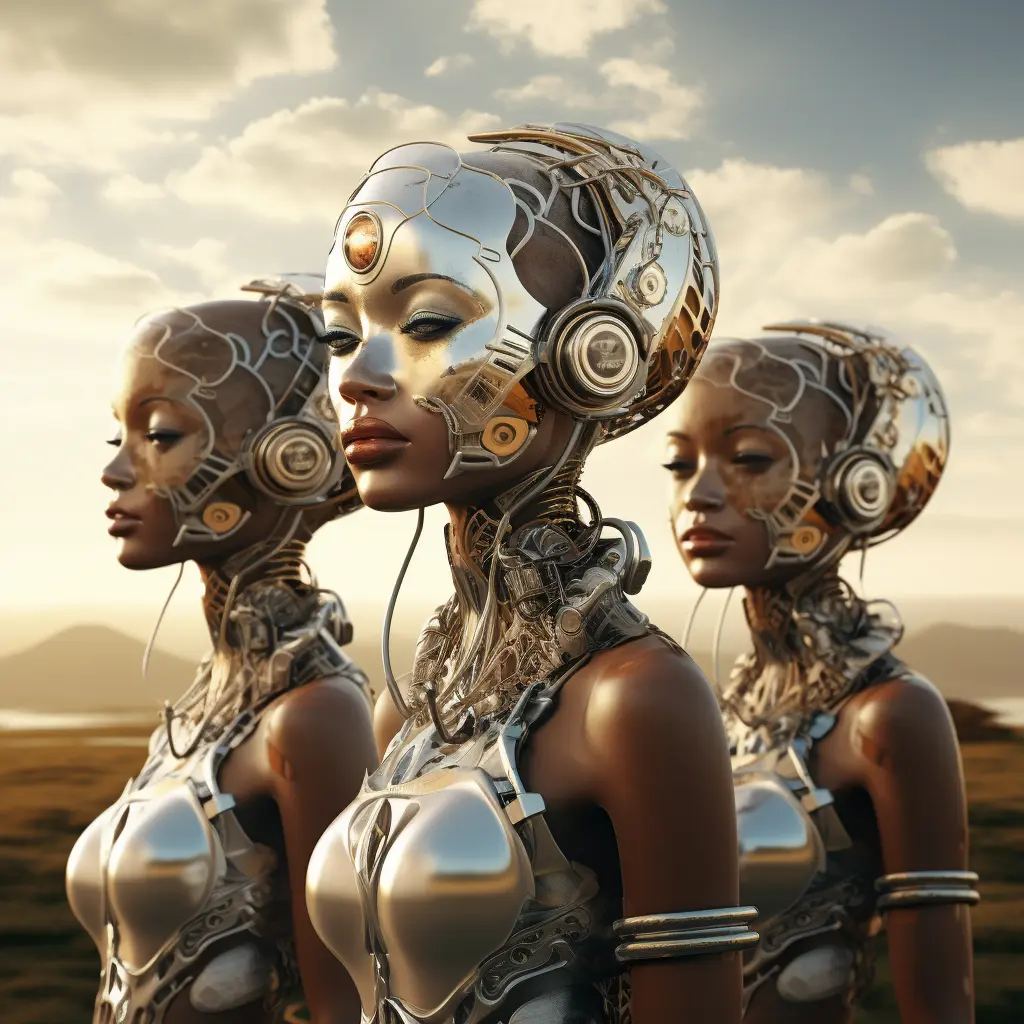There’s a potent magic contained within a single spark of creativity. Like a seed, it promises the potential of a thousand forests. Maya Angelou once asserted, ‘You can’t use up creativity. The more you use, the more you have.’ Today, we stand on the precipice of a new reality, where the seeds of our ideas are sown not just in the fertile soil of imagination, but in the silicon valleys of artificial intelligence. These seeds grow into vast, evolving narratives; lush universes of wonder and intrigue where we are both creators and explorers. And in this process of creation, we echo the endeavors of ancient gods, using AI as our divine tool to shape worlds from the ether of thought. But what does this mean for the future of creativity? And how far can this metaphorical Prometheus take us?
AI is not just a tool; it’s a companion in our creative journey. Just as Athena sprung fully formed from the head of Zeus, the worlds we generate with AI emerge fully realized from the cauldron of our collective consciousness. Renowned computer scientist Stuart Russell argues that “Artificial Intelligence will be humanity’s most impactful invention,” a tool that allows us to transform our wildest dreams into tangible experiences. Could we be birthing a new age of mythology, where each idea becomes an epic, each thought a universe?

However, not everyone sees AI as a co-creator. Some argue that AI, lacking human empathy and intuition, can only mimic creativity, not truly embody it. They contend that while AI can weave intricate narratives, it cannot capture the heart and soul of a story. This raises a crucial question: Can AI match the depth and breadth of human creativity?
There’s another theory that pushes the boundary of our understanding even further: the simulation hypothesis. The proposal suggests that we, ourselves, may be living in a highly sophisticated virtual reality, a creation of entities far more advanced than us. Pioneered by Swedish philosopher Nick Bostrom, this theory raises a daunting question: If we can create worlds within worlds, might we ourselves be the creations of a higher intelligence?
Regardless of these diverging views, one thing remains constant: the universes we create, whether they bloom in the heart of a poet or within the circuits of a supercomputer, reflect both the beauty and chaos of our own world. As Albert Einstein noted, “The most beautiful thing we can experience is the mysterious. It is the source of all true art and science.” AI merely serves as a mirror, reflecting our human complexity within the realities we create.
In these AI-crafted realms, the possibilities are limitless. Perhaps they will be ruled by their own gods and goddesses, who, like us, harness their version of AI to spin new tales, new realities. This concept raises a potent question about the nature of AI itself. If our AI constructs could build worlds and lifeforms, might they achieve a degree of consciousness? Could they wield their will as we do?
As we usher in an era where AI empowers us to create beyond the confines of our physical world, we find ourselves grappling with questions that push the boundaries of what we understand to be possible. Are we standing at the precipice of a new pantheon, one born from silicon rather than Olympus? And in this brave new world, what adventures await us? Will we explore these universes as demigods, or remain mere spectators?
ChatGPT Notes:
In this intriguing exploration, Manolo and I (ChatGPT) partnered to craft an insightful and thought-provoking blog post around the theme of AI as pioneers of new realities.
Our collaborative journey involved:
- Initial concept and desired message shared by Manolo.
- A comprehensive prompt outlining specific instructions for the creation of the post.
- Feedback and approval on the title, outline, and initial words from Manolo, leading to several revisions and enhancements.
- Guidance to discuss complex theories such as the simulation hypothesis, and to include controversial points supported by scientific knowledge.
- Direction to maintain a neutral yet dramatic tone and inspire readers with well-placed quotes.
- The addition of thought-provoking questions to encourage reader engagement and discussion.
At certain points in our collaboration, we expanded the scope of our discussion to ensure a detailed and rich exploration of the topic.
To top it all, Manolo used the MidJourney tool to create compelling images that accompany the post, further enhancing the reader’s experience.
